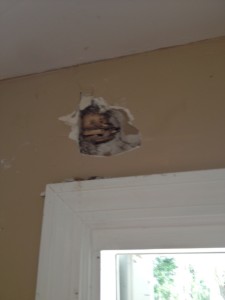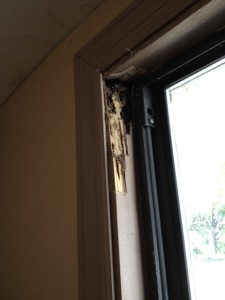 I doubt I can tell you much with one article on how to do a termite inspection. It’s one of those parts of the job where so many things come into play. From the different tools you might need, the head knowledge that helps you sort out the clues you’re presented with and then there’s the willingness you HAVE to have to stick your nose in where no sane person would ever think of.
I doubt I can tell you much with one article on how to do a termite inspection. It’s one of those parts of the job where so many things come into play. From the different tools you might need, the head knowledge that helps you sort out the clues you’re presented with and then there’s the willingness you HAVE to have to stick your nose in where no sane person would ever think of.
However, if there were one thing, one piece of written advice I could give I think it might be this. Whether it’s a termite sale, renewal or most importantly, the WDO/ WDI, (wood destroying organism/insect report for real estate purposes) you HAVE to use your PHD!
Failure to do so can land you in a whole lot of unseen hot water. Not incorporating your PHD has bitten me, it’s gotten others it will get more. From the most experienced to the newest inspector in the field, if you aren’t using your PHD– Trouble will (one day) come your way.
PHD’s Termite Industries Definition
OK ok, so now your just about to tune out of this article because there is no way (for most of us) that we’ll ever attain this type of degree. Even if we do what the heck could this do for me and my termite inspections? The good news here is that everyone in the termite inspection business can use a PHD-They have it at their disposal any and every time they do a termite inspection. No degree required.
Possible Hidden Damage is of course the PHD I’m speaking of and it is an accepted acronym in the industry. It’s on state forms, stock

Damage ONLY revealed with a claw hammer AFTER termite inspection. Small tunnel 6 feet below on baseboard. PHD a good idea?
When & Where It’s Best Used
The letters PHD (possible hidden damage) is best used on a graph or inspection report. In other words, in writing. I’ve verbally told THOUSANDS of clients “I can’t see in the walls—there could be more damage we can’t see.” Yes yes they’ll shake their heads in agreement, but if it’s not in writing isn’t it just a ‘he said she said?’ Your PHD has very little power if it isn’t documented. If you don’t do graphs as a normal practice, I encourage you to start. It doesn’t have to be a masterful depiction, it just has to be. Then, if you’ve noted damage or evidence in an area, simply add your notation PHD.
Is It Professional?
Ok so you noted damage let’s say to a baseboard and the realtor or seller spends $5.50 on a 3 foot replacement and uses a little
paint out of the garage that almost matches. Is that all there is? All fixed? Unfortunately for most buyers they’ll never think more critically about the situation and based on your report and the repairs (and possible treatment), they think they’re buying a perfectly good home. Fast forward two years and they get the itch to expand. The wall you noted with baseboard damage gets opened up and lo and behold— All sorts of termite damage!!!! Do I need to tell you who one of their first phone calls will be to? It’d be nice at this time if you went into your file case, pulled out the report and saw those three little letters–PHD. Not only does it help insulate you but it also gave that client the opportunity 2 years ago, to investigate more, and fully satisfy their need for full disclosure. (even if it was hidden) I’d say that using your PHD is not only the most professional thing you can do, it’s also the smartest. 😉




